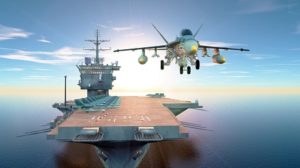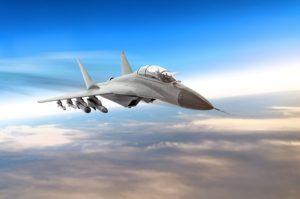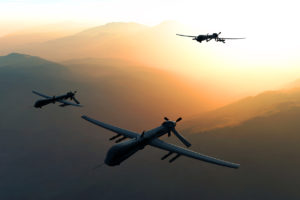Aerospace and Defense Industry – Technology Trends in 2024
The Indian Aerospace and Defense Industry is a critical sector for India’s economy and national security. The Indian A&D sector has made significant strides in recent years, with India becoming one of the largest importers of defense equipment. However, the government has been pushing for greater indigenization of defense equipment and the industry has responded positively with increased focus on research and development, emphasis on developing advanced systems and technologies, collaboration with international partners, push towards receiving technology knowledge, and increased investment in defense sector. Programs like Indian Defense Offset and Make in India are also promoting increased global participation in the Indian Aerospace and Defense segment.
 Leading Aerospace and Defense OEMs are constantly striving to adopt modern technologies to remain competitive and enhance their product capabilities. From Additive Manufacturing, Artificial Intelligence & ML, to Augmented Reality and Digital Twins, OEMs are adopting many game-changing technologies in the aerospace and defense industry.
Leading Aerospace and Defense OEMs are constantly striving to adopt modern technologies to remain competitive and enhance their product capabilities. From Additive Manufacturing, Artificial Intelligence & ML, to Augmented Reality and Digital Twins, OEMs are adopting many game-changing technologies in the aerospace and defense industry.
Let’s look at some of the trending technologies that are expected to augment the Indian Aerospace and Defense segment in the near future.
Stealth
Stealth technology is a combination of techniques that diminish the emission and reflection of visible light-heat signatures, sound, and radio signals by the vehicle surface. While no aircraft is completely invisible to RADARs, stealth aircraft make it more challenging for conventional RADARs to detect and track them. Stealth technology in aerospace and defense encompasses several key aspects which includes use of multiple substrates and techniques. Visual Stealth involves camouflage the aircraft to blend with their surroundings, often using dark colors for nighttime operations. Infrared Stealth focuses on reducing the infrared (IR) signature caused by heated surfaces, achieved through engine placement, air mixing, shielding, and coatings. Acoustic Stealth aims for minimal noise emissions to evade acoustic detection. Achieving this involves engine and airframe design, exhaust systems, and active noise reduction. Radar Stealth is achieved by absorbing or deflecting radar waves using specially coated materials.
Several countries around the world are actively investing in and advancing stealth technology within the aerospace and defense sector. These efforts are aimed at enhancing the stealth characteristics of various military platforms, including aircraft, naval vessels, and ground vehicles. These advancements include the design of stealth airframes, radar-absorbing materials, and innovative sensor systems to reduce the detectability of vehicles and improve their survivability in modern combat scenarios. Additionally, research and development in stealth technology continue to be a focus, with ongoing efforts to refine and evolve these capabilities to maintain a competitive edge in the evolving landscape of aerospace and defense capabilities.
within the aerospace and defense sector. These efforts are aimed at enhancing the stealth characteristics of various military platforms, including aircraft, naval vessels, and ground vehicles. These advancements include the design of stealth airframes, radar-absorbing materials, and innovative sensor systems to reduce the detectability of vehicles and improve their survivability in modern combat scenarios. Additionally, research and development in stealth technology continue to be a focus, with ongoing efforts to refine and evolve these capabilities to maintain a competitive edge in the evolving landscape of aerospace and defense capabilities.
India’s plan to manufacture a stealth aircraft is going to turn into reality as the Advanced Medium Combat Aircraft (AMCA), fifth-generation stealth, multirole combat aircraft program has progressed to Critical Design Review phase. The AMCA is being developed by the DRDO and HAL and is expected to feature advanced stealth technologies such as RADAR-absorbing materials, advanced avionics, and reduced RADAR cross-sections. The Indian defense industry is also focusing on developing stealth unmanned aerial vehicles (UAVs), which can be used for surveillance and reconnaissance missions.
Artificial Intelligence and Machine Learning
The Indian Aerospace and Defense industry is taking massive steps in transforming the defense forces. The industry is embracing modern technologies to add intelligence to defense forces and deployments. Bold policies and the drive towards indigenization have created an atmosphere for groundbreaking innovation and collaboration. The collaborative effort by research institutes, academic institutions, public and private industry, and start-ups has helped create many unique AI & ML based technological products in areas such as surveillance, data, and logistics.
The use of AI & ML aids developers/users to gather crucial information and performance data of various components in a mission-critical platform. This will help them continually enhance product performance, minimize errors, monitor the health of electronics within aircraft, and manage safety concerns effectively. AI and Machine Learning enable Autonomy in ISR (Intelligence, Surveillance, and Reconnaissance), and data management, which will benefit in combating terrorism, implementing counter-terrorism measures, and safeguarding assets.
The use of advanced AI analytics, computer vision systems and geospatial data processing can help identify, locate, and categorize imminent threats. AI-powered military robots, unmanned vehicles like battle tanks and aircrafts can make decisions faster and act swiftly in battlefield.
Indian Aerospace and Defense organizations are making significant strides in harnessing Artificial Intelligence (AI) and Machine Learning (ML). Some of the projects includes underwater threat detection using AI & ML, development of AI-driven multi-role, advanced and long-endurance drones to step up vigilance strategically in high-altitude Northern and North-eastern border areas, and using AI & ML for surveillance and reconnaissance operations. These initiatives underscore India’s commitment to enhancing defense capabilities through AI and ML.
Robotics and Unmanned Systems
 Robotics and Unmanned Systems are rapidly advancing and becoming increasingly popular in
Robotics and Unmanned Systems are rapidly advancing and becoming increasingly popular in
the Aerospace and Defense industry. These systems are programmed to perform tasks independently as well as under human supervision. Robotics and Unmanned Systems can be equipped with various sensors and tools. Some examples of unmanned systems include drones, unmanned ground vehicles (UGVs), and unmanned underwater vehicles (UUVs).
Robotics and Unmanned Systems are getting popular in the Aerospace and Defense industry as they help to cut the operational cost and increase efficiency. Cost and risks associated with human workforce in an operation in a hazardous environment can be overcome by using robots and unmanned systems. These systems can operate and perform high-risk tasks for extended hours with increased efficiency and productivity, thereby reducing or mitigating the risk of injury or loss of life for human operators.
Indian Aerospace and Defense organizations have undertaken numerous prominent projects in the realm of Robotics and Unmanned Systems. One initiative focuses on an electrically powered, fully automated, remotely operated vehicle for tasks like bomb disposal and handling hazardous materials. Another project involves a versatile unmanned ground vehicle capable of autonomous navigation using GPS waypoints and equipped with obstacle detection and avoidance capabilities for military applications, including mine clearing, surveillance, and operation in contaminated zones. Additionally, there is an effort dedicated to developing indigenous Unmanned Aerial Vehicles (UAVs) for surveillance and reconnaissance. Another initiative involves a versatile multi-mission UAV, capable of battlefield surveillance, reconnaissance, target tracking, localization, and artillery fire correction, launched from a mobile hydro-pneumatic launcher with day/night capabilities. These initiatives reflect India’s commitment to enhancing its defense capabilities through the integration of Robotics and Unmanned Systems, with a focus on improving operational efficiency and safety while maintaining a strategic advantage.
the realm of Robotics and Unmanned Systems. One initiative focuses on an electrically powered, fully automated, remotely operated vehicle for tasks like bomb disposal and handling hazardous materials. Another project involves a versatile unmanned ground vehicle capable of autonomous navigation using GPS waypoints and equipped with obstacle detection and avoidance capabilities for military applications, including mine clearing, surveillance, and operation in contaminated zones. Additionally, there is an effort dedicated to developing indigenous Unmanned Aerial Vehicles (UAVs) for surveillance and reconnaissance. Another initiative involves a versatile multi-mission UAV, capable of battlefield surveillance, reconnaissance, target tracking, localization, and artillery fire correction, launched from a mobile hydro-pneumatic launcher with day/night capabilities. These initiatives reflect India’s commitment to enhancing its defense capabilities through the integration of Robotics and Unmanned Systems, with a focus on improving operational efficiency and safety while maintaining a strategic advantage.
A long way to Go!
The advancements in technologies such as Stealth, Counter-surveillance, Artificial intelligence, Machine Learning, Cybersecurity, Robotics, and unmanned systems are transforming the Aerospace and Defense industry. These technologies will bring numerous benefits to the Aerospace and Defense sector, enabling increased efficiency and productivity while minimizing risks to military personnel. Upgrades and technology updates are expected to continue to enhance the industry further. As such, the Aerospace and Defense industry in India is poised for growth and development, as technology continues to play a critical role in ensuring the safety and security of the nation.




